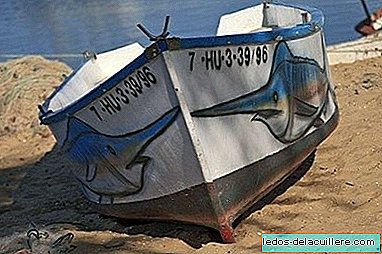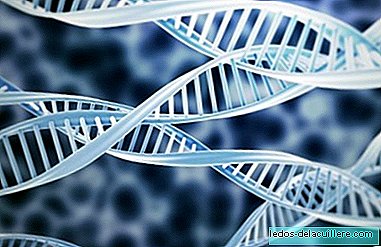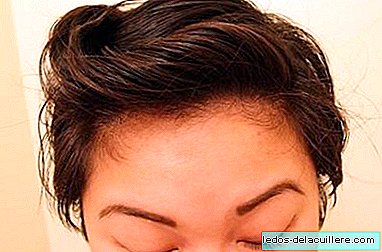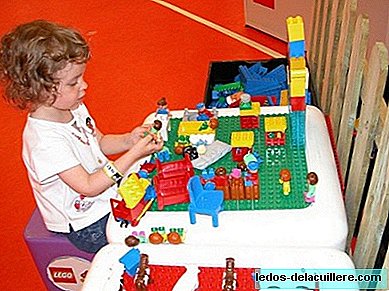
In the introduction to fish in infant feeding we explained that there are quite a few differences when it comes to establishing the age at which fish can be added to the baby's food.
But in what there was more consensus is that blue fish must be introduced after white fish, at 18 months of age. Especially its fat content, as well as its stronger flavor, do not make it suitable for babies under 18 months.
The Spanish Association of Pediatrics in its "Practical Manual of Nutrition in Pediatrics" tells us that from the age of 2 onwards "Encourage fish consumption and better if it is blue".
Now we see what are the blue fish, what nutritional properties do they have and what is the best mode of preparation for the child.
What are the blue fish?
The concept of blue fish (also called fatty fish) refers to the proportion of fat inserted between the muscles of the fish. Blue or fatty fish is a group of fish that contains more than 5% fat, while white or lean fish, as we saw, contains approximately only 2%.
The amount of fat influences the coloration, so much of the fatty fish have external coloration with blue tones, hence its name. Blue fish are generally deep and cold water.
The fish that falls into this category is less sedentary than the one considered white, hence its greater need for fat. For the same reason, blue fish have a tail or tail fin much more potent than white fish, with a top edge bracketed (in white fish it is rounded).
The main blue fish are: tuna or northern bonito, sardine, anchovy or bocarte, herring, salmon, mullet, eel, horse mackerel or common rind, swordfish (emperor or albacore), lamprey, green, mackerel, dove, sea trout, dogfish ...
Salted cod is considered, on a nutritional level, a blue fish, since the salting process considerably increases its fat concentration. But this type of food does not interest us for the baby's diet because of its high salt content.
With respect to turbot and conger, there are classifications that include them among white fish and others among blue ones. When in doubt, I would not recommend them as the first options to offer the baby, but would delay them.
Benefits of blue fish
Blue fish is low in saturated fat and a very important source of Omega-3 fatty acids, which in recent years are emerging as nutrients with multiple health benefits, since pregnancy and of course also in childhood.
Omega-e acids help control blood pressure, reduce the cholesterol rate and improve heart functions.
All varieties of blue fish contain omega-3, whether fresh, smoked or canned, although for the child's feeding we will choose the oldest products, fresh fish for cooking as we will see in the next section.
Of the protein sources, fish represents the food par excellence. It also provides calcium, iron, vitamins A, B1, D and E, zinc ...
In addition, the consumption of blue sea fish (like white) provides children with the iodine necessary for the development of their central nervous system.
How to prepare blue fish
Regarding the choice of blue fish for children's food, there are not too many differences in white fish. We will have to notice that the eyes and skin are bright and the piece does not give off a bad smell.
We can choose fresh or frozen fish (cheaper and with the same properties), and if we opt for local varieties the price will also be lower.
Many of the blue fish are sold whole, although in the fish market or we ourselves can separate the fillets that do not carry thorns (or at least with less risk of carrying them, we always have to check and shred the fish meat).
Of course, in some fish such as sardines the spine is very difficult to remove, and although for an adult it is easy to separate them and even without swallowing the softest ones, nothing happens, it is better that children do not eat pieces with thorns.
Tuna and emperor fillets are free of thorns (except if it has a large central part, which can be separated), although these fish, if large, tend to accumulate mercury, so it is better to choose small specimens.
Regarding its preparation there are differences. Since the child is already 18 months or two years old, we would not introduce the blue fish in porridge, but it can be prepared boiled, baked or grilled, adding a little iodized salt after cooking and served on the plate next to the corresponding accompaniment (potato, vegetables, soup, pasta ...).
Omega-3 acids are reduced with prolonged cooking, but not to the point of losing their effectiveness and great benefits.
At the beginning, due to its characteristic flavor and its more greasy texture, the child rejects the fish, although if he has not had problems accepting the softer white fish, he probably does not have them now either.
Even so, we must be alert to any adverse reaction, and start with a small amount. Little by little we will take advantage of multiple possibilities of preparing blue fish to incorporate it into the child's diet next to that of the whole family.
Photos | Tomás Fano and www.bluewaikiki.com on Flickr In Babies and more | Complementary feeding: the fish, Tricks so that the children enjoy the fish, The fish in the infantile feeding












